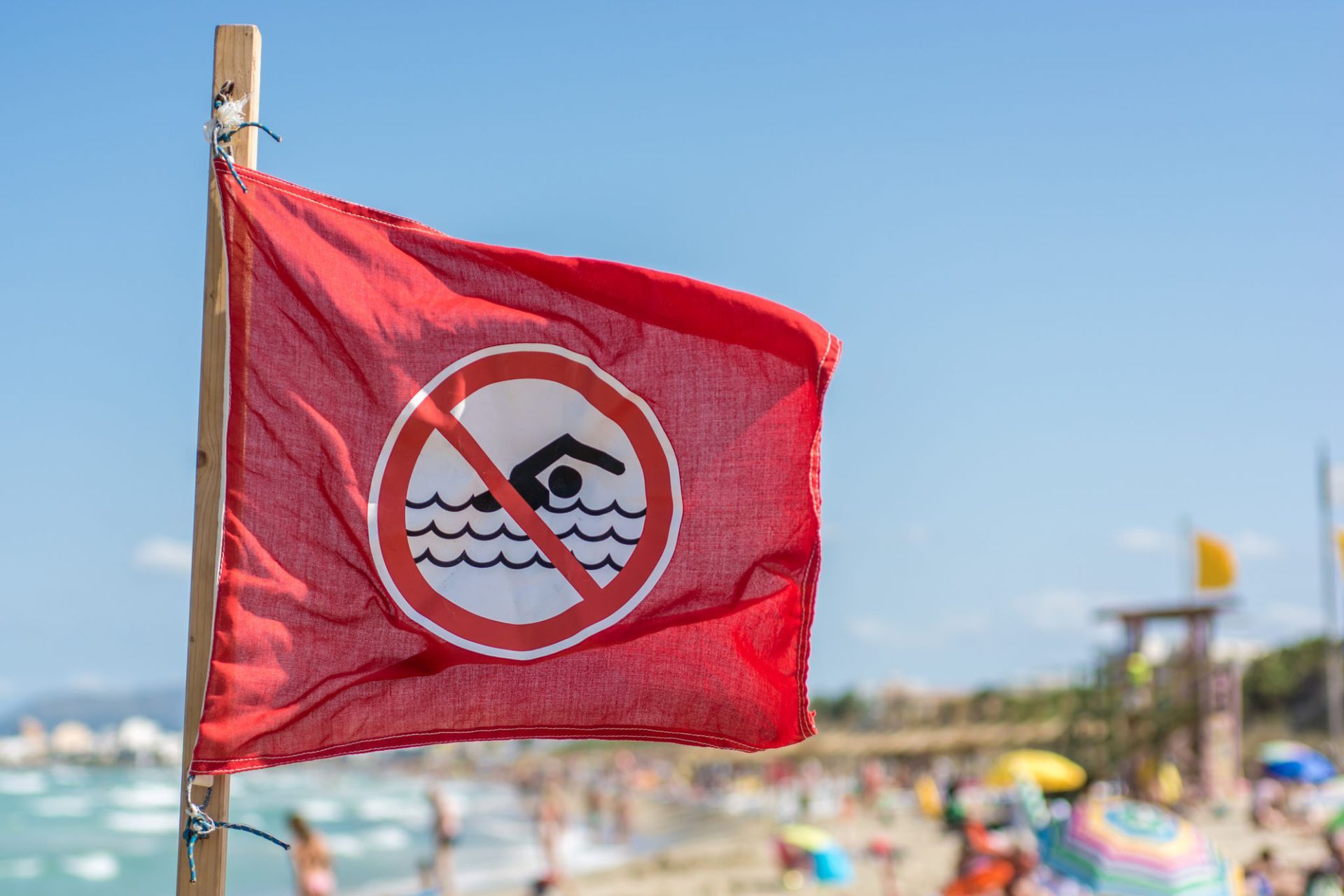Going to the Beach? 3 Indicators That You Probably Shouldn’t Swim There

Going to the beach can be an absolute blast! Whether you’re splashing in the surf, lounging on the sand, or playing with friends, there’s a ton of fun to be had. All that fun can make it easy to forget the dangers inherent to swimming in the ocean. Because safety is the foundation for good fun, it’s important to keep an eye out for indicators that any particular beach isn’t a safe place to swim.
Signage
It’s always a good idea to keep an eye out for signs posted along the beach. These can indicate things like strong currents, a high surf, sharp coral, a sudden drop-off, or a dangerous shore break. Some may explicitly state that it’s unsafe to dive or even swim in the area. If you see these signs, that’s a good indicator that you should proceed with caution at the very least, but more likely should just not swim there altogether. Depending on the beach, other activities like boating or surfing may still be safe enough to do.
No Lifeguard on Duty
Because swimming in the ocean means you’re exposing yourself to dangers you wouldn’t typically face in a swimming pool, having a lifeguard on duty is especially important. Lifeguards should be familiar with the beach, the specifics of ocean safety, and how to rescue beachgoers who find themselves in trouble. It’s always safer to swim at a beach with a lifeguard watching over everyone. If there isn’t one at the beach you’re visiting, it’s safe to hold off on swimming for the time being.
Bad Weather
Idyllic beach days are warm and sunny, perhaps with the occasional ocean breeze drifting along. That’s not always how things work out though. High winds can make ocean waves more treacherous, and thunderstorms can make being in the water deadly. Keep an eye on the weather forecast to see what it will be like at the beach when you intend to go. If the weather doesn’t look good, it may be best to choose another day to visit.
Having a fun time at the beach starts with being safe. Be on the lookout for signage that indicates that the water isn’t safe for swimmers. If there aren’t any lifeguards on duty or the weather is bad, that’s also a good sign that you should probably stay out of the water. Keep yourself and those around you safe by watching out for indicators that you shouldn’t swim there.
Want to stay safe while you’re swimming? Review these Golden Rules of Water Safety & Drowning Prevention to help keep yourself and others safe in and around the water.
The post Going to the Beach? 3 Indicators That You Probably Shouldn’t Swim There appeared first on Swim Jim.







